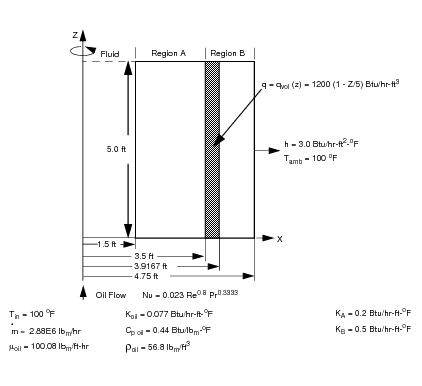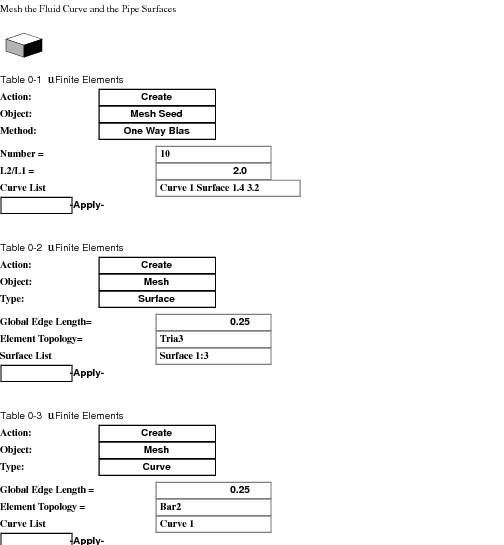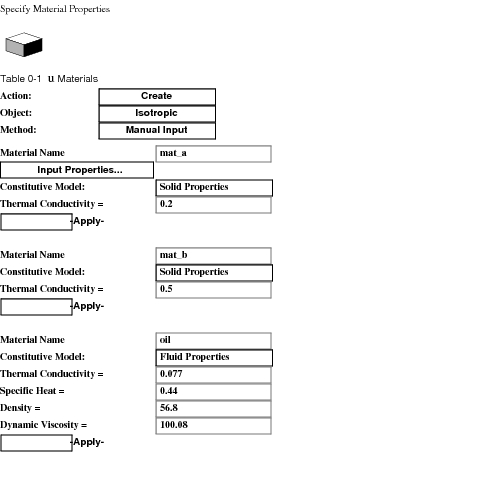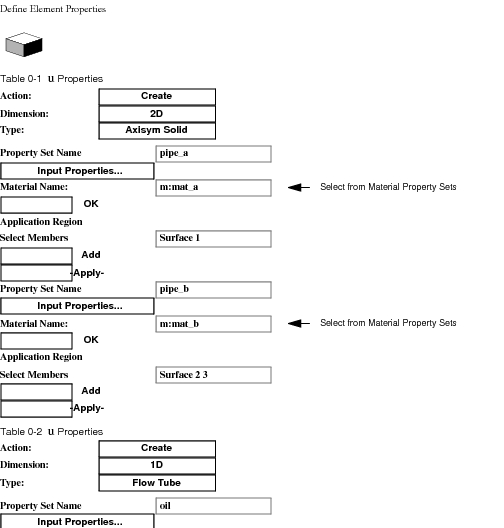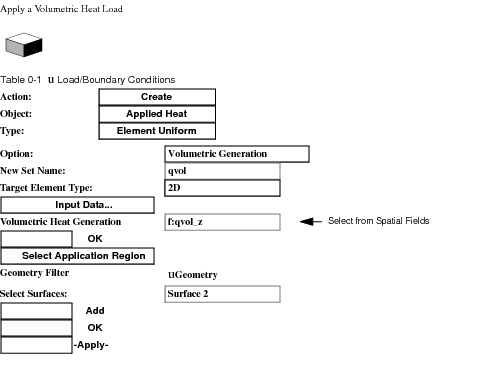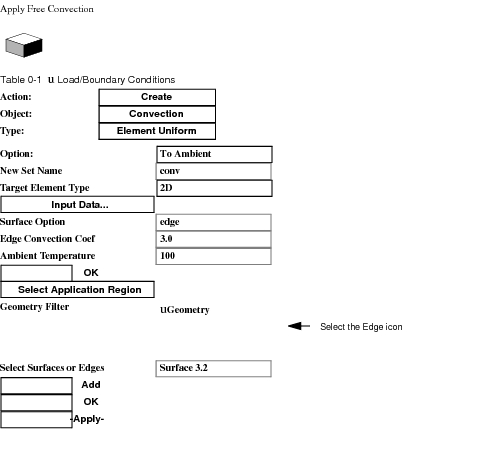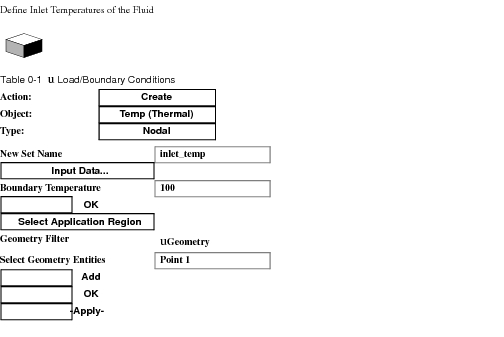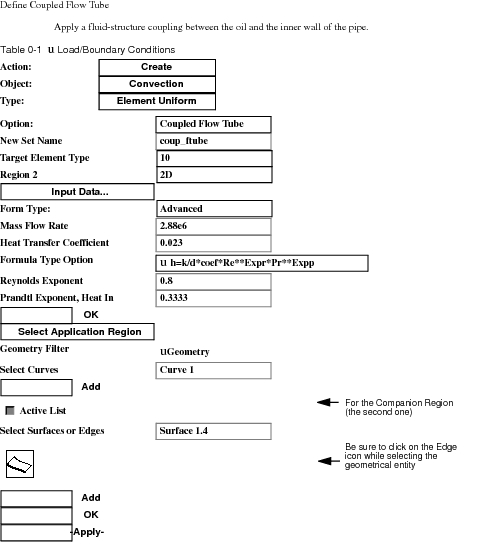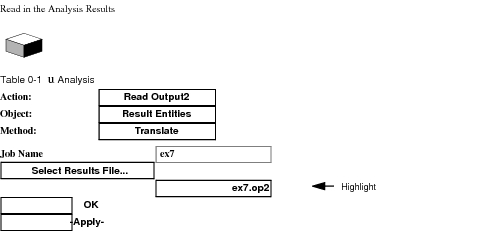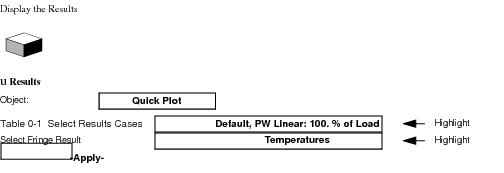XXXXXXXXXXXXXXXXXXXXXXXXXXXXXXXXXXXXXXXXXXXXXXXXXXXXXXXXXXXXXXXXXXXXXXXXXXXXXXXXXXXXXXXXXXXXXXXXXXXXXXXXXXXXXXXXXXXXXXXXXXXXXXXXXXXXXXXXXXXXXXXXXXXXXXXX''"> 7.8 Example 7 - Axisymmetric Flow in a Pipe
Problem Description
In this example we will analyze an axisymmetric structure for its temperature distribution. We will use the MD Nastran CTRIAX6 axisymmetric element (in its 3 node configuration) as the heat conduction element.
The basic geometry is detailed in the figure above. A section of pipe consisting of composite materials is divided into two different material regions. Region A is from radius 1.5 feet to 3.5 feet. Region B is from radius 3.5 feet to 4.75 feet. The overall pipe section is 5.0 feet long with an inside diameter of 3 feet and an outside diameter of 9.5 feet.
Oil flows through the interior with an inlet temperature of 100 oF and a mass flow rate of 2.88E6 lbm/hr. The forced convection heat transfer coefficient between the oil and wall is calculated by MD Nastran using the following relationship:
Nu = 0.023 Re0.8 Pr0.3333
Thermal conductivity properties for Region A and Region B are 0.2 and 0.5 Btu/hr-ft-oF.
Volumetric internal heat generation occurs in the subregion of Region B (Specifically from radius 3.5 feet to 3.9167 feet), and varies based on Z location. The heat generation is 1200 * (1-Z/5) Btu/hr-ft3, where Z is given in units of feet. Free convection to an ambient temperature of 100 oF is applied to the exterior surface of the structure through a heat transfer coefficient of 3.0 Btu/hr-ft2-oF.
Modeling
We will apply a special modeling technique, FIELDS, to input the volumetric heating rate as a function of Z. Coupled Flow Tube is used to tie the structure to the fluid elements.
Discussion of Results
The maximum temperature occurs near the internal heat generation region with a temperature of 842.3oF. The fluid temperature remains constant at 100 oF because of the massive flow rate at 2.88E6 lbm/hr.
We can check the energy balance on this model as follows:
Total heat = 2.91246E4 Btu/hr (from the OLOAD RESULTANT of the F06 file)
Sum of the heat on the column under Free Convection = 2.5828E4 Btu/hr
Sum of the heat on the column under Forced Convection = 3.297E3 Btu/hr
Sum of the heat on the above two columns = 2.9125E4 Btu/hr, which is equal to the input heat of 2.91246E4 Btu/hr.
An assumption of a 1-D fluid element is that temperature gradients within the fluid are only significant along the axial direction. With such a large diameter flow tube, this assumption is probably being misused in this particular problem. The application of the flow tube boundary convection relationship also implies fully developed flow, yet, over only a 5 foot section and with a 3 foot diameter, this is also a very crude approximation. In essence, what we are saying, is that this example serves to illustrate coupled convection in an axisymmetric environment, application of spatial heat loads, and use of convection correlation equations, rather than fluid physics.
